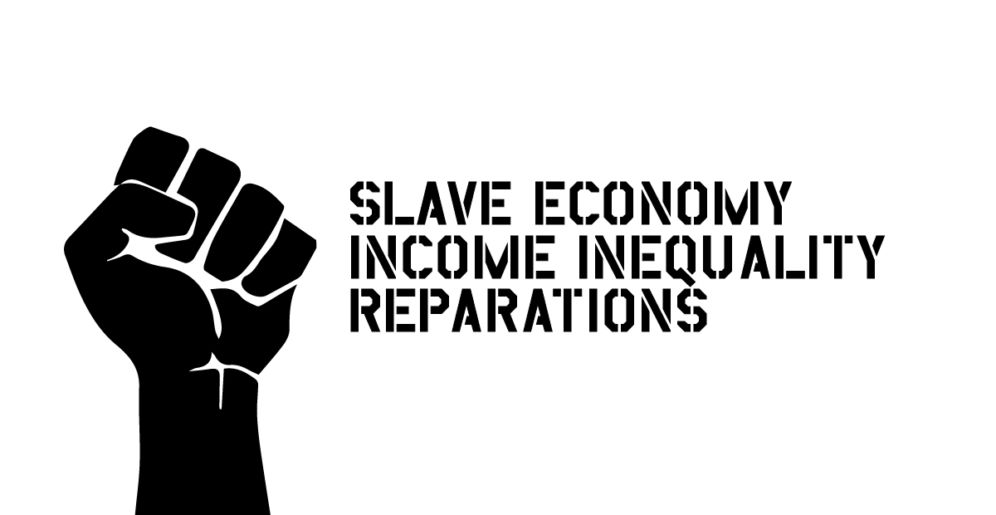(Akiit.com) National Reparations Awareness Day is Feb. 25 and will be commemorated locally at the Center for Black Literature & Culture (virtually) in partnership with the local N’COBRA chapter. This annual observance started several years ago by the National Coalition of Blacks for Reparations in America (N’COBRA) to bring additional focus to the cause of reparations beyond the annual N’COBRA conference. Reparations are a program of acknowledgement, redress and closure for a grievous injustice, as defined in “From Here to Equality, Reparations for Black Americans in the 21st Century,” by William A. Darity Jr. and A. Kirsten Mullen.
Dr. Allen J. Davis created a historical survey of reparations payments by the United States from 1783 through 2022. The first payment spotlighted in this particular survey occurred in 1783 and was given to Belinda Sutton who was born in Ghana and enslaved as a child by Isaac Royall of Massachusetts. She achieved her freedom by fleeing to Canada. Later Sutton petitioned and was awarded a pension. The payment came from the estate of Isaac Royall.
On Jan. 12,1865, Gen. Sherman met with Black leaders in Savannah, Georgia. Sherman issued a few days later what became known as the “Special Field Order No. 15,” which stated that Black people (formerly enslaved) would receive an army mule and not more than 40 acres on coastal plains of South Carolina and Georgia. By June of that same year approximately 40,000 Blacks settled land previously owned by Confederate landowners.

This is an incident that many people are familiar with and where the term 40 acres and a mule comes from. Soon after the Confederate (former) landowners in league with the federal government began taking land from the newly free Blacks.
Between 1866-1988, there were many incidents of reparations that were given to many individuals and groups. In 1988 the Civil Liberties Act of 1988 was signed into law by then-President Ronald Reagan. The bill totaled $1.2 billion ($20,000 a person) and an apology to 60,000 living Japanese-Americans who had been interned during World War II.
In 1989, Congressman John Conyers (D-Michigan), introduced bill HR 3745, which aimed to create the Commission to Study Reparation Proposals for African-Americans Act. The bill was introduced “[to] address the fundamental injustice, cruelty, brutality, and inhumanity of slavery in the United States and the 13 American colonies between 1619 and 1865 and to establish a commission to study and consider a national apology and proposal for reparations for the institution of slavery, its subsequent de jure and de facto racial and economic discrimination against African-Americans, and the impact of these forces on living African-Americans, to make recommendations to the Congress on appropriate remedies, and for other purposes.” This bill only asked to study the issue of reparations. Congress studies many things: air, water, dirt, animals, etc. This particular topic has never been deemed worthy of study. Rep. Conyers, now deceased, brought forth this bill each year that he remained in office. It later became known as the HR 40 (for 40 acres and a mule.) Rep. Sheila Jackson Lee (D-Texas) took up the baton when Conyers left office.
Rep. Lee’s most recent bill asked for not just a study of reparations but for a plan to repair the damage done. According to congress.gov., the bill introduced in the House on Jan. 4, 2021, was the “Commission to Study and Develop Reparation Proposals for African Americans Act.”
“This bill establishes the Commission to Study and Develop Reparation Proposals for African Americans. The commission shall examine slavery and discrimination in the colonies and the United States from 1619 to the present and recommend appropriate remedies.
The commission shall identify (1) the role of the federal and state governments in supporting the institution of slavery, (2) forms of discrimination in the public and private sectors against freed slaves and their descendants, and (3) lingering negative effects of slavery on living African Americans and society.”
In 2014 Ta-Nehasi Coates wrote an essay for the Atlantic about the necessity of reparations for Black Americans. “Two hundred fifty years of slavery. Ninety years of Jim Crow. Sixty years of separate but equal. Thirty-five years of racist housing policy. Until we reckon with our compounding moral debts, America will never be whole.” Five years later Coates testified before Congress regarding the importance of reparations for the nation as a whole, not just Black people.
Some reading this column might wonder if there is any chance for Black Americans descended from enslaved people who were forcibly taken from their homeland and brought unwillingly in the bowels of ships during the Middle Passage to receive reparations. Could the descendants of people who are thought of as chattel, bartered, mortgaged, and who subsequently built this country with their literal blood, sweat and tears, could those descendants ever receive any repair? I say yes. We have historical precedent with other groups receiving reparations from the United States government.
In the last several years, Evanston, Illinois, and Ashville, North Carolina, are two communities that have approved reparations on a local scale. I believe to solve the problem of systemic racism we need repair on the local, state and federal levels. People question where the money would be found. I say when America begins a new war, money is always found. Why would money not be found for this worthy cause?
The Brookings Institute on Feb. 27, 2020, stated that the wealth gap between Blacks and whites is immense. “At $171,000, the net worth of a typical white family is nearly ten times greater than that of a Black family ($17,150) in 2016.” This disparity has come from 246 years of chattel slavery in addition to the Congressional mismanagement of the Freedman’s Savings Bank (which left 61,144 depositors with losses of nearly $3 million in 1874). That’s in addition to the many instances when wealthy Black areas around the United States were burned and the wealth taken forcibly — Tulsa and Rosewood, for example.
The GI Bill was used to create the middle class for white Americans; however when Black GI’s returned they were generally not able to fully utilize those same opportunities for homes or college educations. Redlining, areas where Black Americans were deemed a risk and white areas were not, occurred from 1935-1968 when the Fair Housing Act was passed. For more than 54 years this law has been on the books but has not been enforced by any president, no matter the party. In a recent ABC News equity report it was found that mortgage loan approvals for Black applicants were 35% compared to whites which were 56%, when accounting for similar incomes and other characteristics.
If something is not done about this wide racial wealth gap it will only expand. This gap does a disservice to all of our communities as well as individuals. We can no longer turn a blind eye to this injustice and hope it will go away with so-called trickle-down economics and bootstrap policies. It is often touted that we have a representative democracy: “By the people and for the people.” Black Americans are U.S. citizens and deserve the full protection under the law. It is up to us and our allies to reach out to our representatives and ask them to support HR40 so that it can be passed into law. HR40 currently has 196 co-sponsors, more than ever before.
We must press forward and ride the current wave for Racial Justice. “If not now, when? If not you, who?”
Columnist; Nichelle M. Hayes
Official website; https://twitter.com/nichellemhayes









Leave a Reply